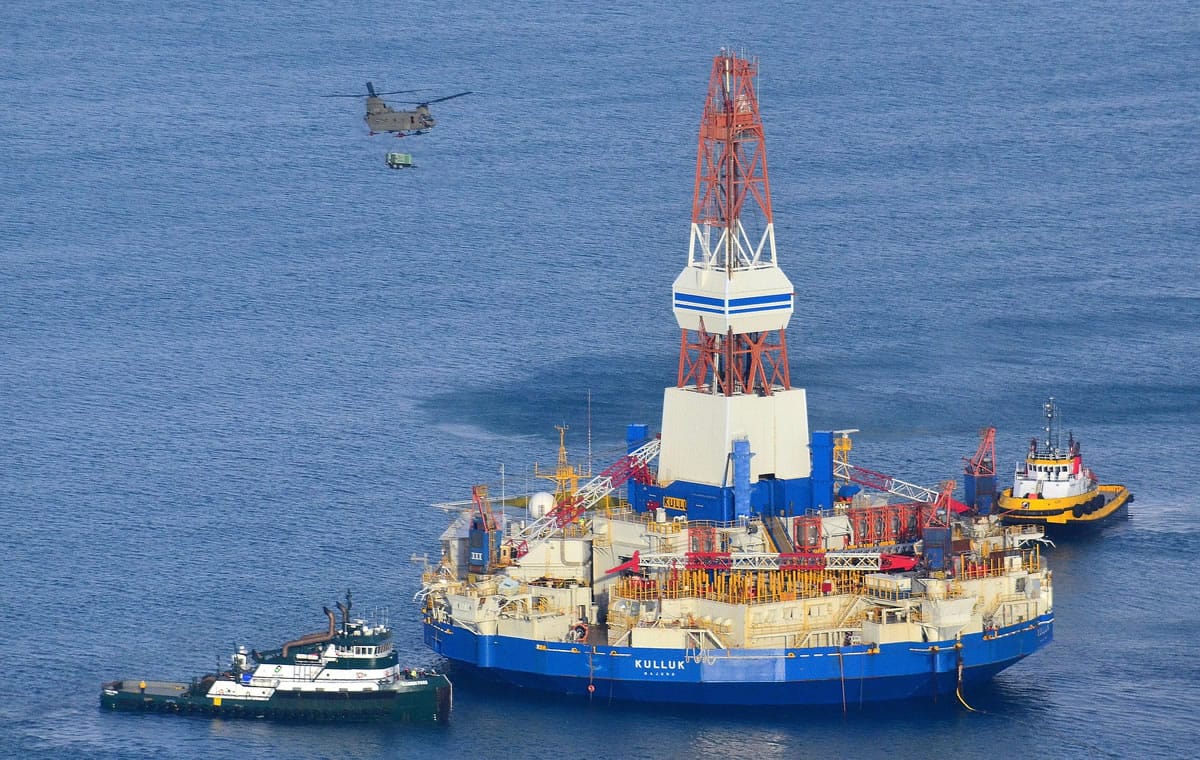ANCHORAGE, Alaska — Royal Dutch Shell PLC will send a damaged ship carrying equipment required for Arctic offshore oil drilling from Alaska back to the West Coast for repairs.
But spokesman Curtis Smith said Monday the company can begin top-hole work without the 380-foot icebreaker Fennica and the repairs should not interrupt Shell’s schedule for drilling two exploratory wells this summer in the Chukchi Sea off Alaska’s northwest coast.
“We do not anticipate any impact to the (drilling) season as we do not require the vessel until August,” Smith said.
The Fennica’s primary job for Shell is carrying equipment for stopping a well blowout. The equipment is not required by federal regulators until drill bits hit hydrocarbon zones. Shell’s two drill vessels can begin top-hole work without the Fennica, Smith said.
Shell and other companies hope to tap into one of the country’s last great petroleum reserves. The U.S. Geological Survey estimates the Arctic offshore reserves in the Chukchi and Beaufort seas at 26 billion barrels of recoverable oil.
Shell has invested upward of $7 billion on leases and exploration expenses.
Arctic offshore drilling is bitterly opposed by environmental groups that say major oil spills are inevitable in the inhospitable region that features brutal storms and sea ice most of the years. They say oil companies have not demonstrated they can clean up a spill in ice and that burning petroleum from the region will add to global warming already melting sea ice needed by polar bears, walrus and ice seals.
The hull of the Fennica was gashed July 3 as it departed Dutch Harbor in the Aleutians for the Chukchi Sea. The vessel under the direction of an Alaska harbor pilot struck an uncharted object, creating a hole in the hull about 3 feet long and a half-inch wide.
The Fennica carries a capping stack, the third line of defense in what Shell says is an unlikely scenario of a blowout. A capping stack is a roughly 30-foot device that can establish a metal-to-metal connection on a well head, turning the tap off on gushing oil or connecting to hoses and directing crude oil to vessels on the surface.
The Fennica is an icebreaker and could also be used to manage icebergs floating near drilling vessels. Shell said the special steel in the ship’s hull meant a permanent fix would be required in dry dock.
“While we believe the interim repairs could have been made in Dutch Harbor, our preference is to pursue a conservative course into a shipyard where a permanent fix can be performed,” Smith said.
Shell hopes to begin exploratory well work as early as next week but is awaiting final permits to drill from the federal Bureau of Safety and Environmental Enforcement.
The company will drill in water about 130 feet deep. Hydrocarbon zones are about 8,000 feet deep.



